Your Guide to Drain Clogs – Causes, Solutions, and Prevention Tips


If you’ve got a clogged drain, don’t panic. It happens to the best of us! With some patience and know-how, you can clear your home’s plumbing system and get back to normal life. Before we jump in, let’s take a moment to define what exactly is a drain clog:
A drain clog can come from any material stuck in the pipes, preventing water from flowing through them. This includes hair, food particles and grease buildup. You may also hear this referred to as “blocking” or “clogging up.”
There are many different ways for something like this to happen, but we’ll focus on some common scenarios below. Each one has its own unique causes and solutions, so read on to see which one matches your situation!
In this article, we take a look at everything you should know about drain clogs. We look at causes, solutions, and some prevention tips you can follow to safeguard your interests in the future. Stay with us for more.
What Causes a Clogged Drain?
You may be surprised to learn that clogs in your drains are often caused by something as simple as toothpaste residue. Toothpaste is made up of several ingredients, including glycerin and magnesium stearate. These can form a hard crust in the drain that gets stuck and builds up over time until you have a full-on clog.
There’s also dry hair stuck in the drain—and it happens more than you think! If a strand of hair gets snagged on the edge of a drain or pipe and then breaks off, it becomes even more prone to getting sucked down into the sewer pipes, where it can stay for months before finally breaking free.
Some other common culprits are plastic parts (for example, water bottle scraps), rubber materials (like used sponges), just soot and dry cement (which comes from dry wind) or oil buildup in kitchen drains.
How to Unclog Your Drain?
Now that we know what causes a drain clog, we move toward what can be done to unclog one. The first step in unclogging a drain is to clear out any hair or debris that may be clogging the drain. If this doesn’t work, you might need to use a plunger or drain snake.
Alternatively, if your sink is still clogged even after using these methods, you should try using chemical drain cleaner since it could be caused by debris build-up in the pipes. Sometimes, however, you will have to call a professional plumber as well because they know how to diagnose and fix your problem properly.
If you have a clogged toilet, your first step should be to try plunging it. If this doesn’t work, you can try using a chemical drain cleaner or a plunger with an auger attachment. If your toilet is still clogged after trying these methods, you should call a professional plumber.
How to Prevent a Clogged Drain
Once you’ve removed the clog and the water has stopped flowing, you can prevent future clogs by taking the following actions:
- Use a plunger or drain snake. These tools are inexpensive and easy to use, and they’ll help keep your bathroom drains clear. Plungers fit over the drain opening to create suction that pulls out hair, food scraps and other debris from your pipes. A drain snake is similar but has a flexible wire loop with brushes at both ends for reaching farther into pipes. You can purchase these handy devices at home improvement stores or online at Amazon; just make sure to get one that’s sized correctly for your toilet’s opening (smaller ones work best).
- Use chemical drain cleaners sparingly in tandem with plunging or snaking if needed—these substances contain toxic chemicals that may cause serious health risks if ingested by humans or animals (especially those who love licking up spills!). And be sure not to use them around kids under age 6 because their developing brains aren’t yet able to filter out toxins very well yet!
If you’re not up to the task of plunging or snaking your own toilet, ask a trusted friend or family member for help. If that’s not an option, contact a plumber; they usually offer 24/7 service and aren’t too expensive when compared to other home repair professionals like electricians and HVAC technicians.
Drain Maintenance Tips for the Future
To prevent drains from clogging in the future, use a drain strainer to catch hair, food particles and other objects that can cause blockages. If you already have a clog, try using a plunger before calling a plumber. Plungers work by creating suction that helps break up the grease or debris in your drain. If all else fails, call for professional help as soon as you can because unclogging drains isn’t easy and shouldn’t be done alone!
Additionally, you should make sure you keep an eye on your younger ones so that they don’t throw used toys, rubber bands, and stationery items down the drain.
Takeaway:
Now that you know a little more about your drains, here are some takeaways:
- Drain clogs are common but not always preventable. There’s nothing worse than seeing the toilet overflow because of a clog, so it’s important to stay on top of any potential issues before they happen.
- Preventive maintenance can help you avoid future clogs. By using the right tools and techniques for your specific drain (and regularly inspecting it), you can keep your drains running smoothly and keep them from getting blocked in the first place.
With these tips, you’ll be able to keep your drains clear and free of clogs. This is especially important if you live in an older home or have septic tanks installed outside. If you’re looking for more information about how to unclog drains, contact us today!
RECENT POSTS
categories
Archives
2024
2023
2022
2021
2020
2019
- December (2)
- November (2)
- October (2)
- September (2)
- August (2)
- July (2)
- June (2)
- May (2)
- April (2)
- March (2)
- February (2)
- January (2)

